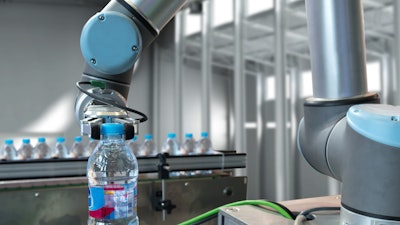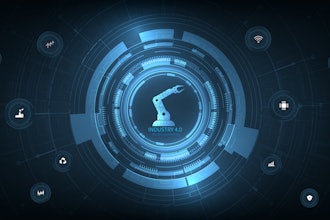
Robots continue to revolutionize the future of work by improving efficiency, both through automation of repeatable tasks, as well as by being able to act autonomously to make complex decisions. The more robots are able to adapt to changing situations, the more value they can provide.
In the past, the electronics industry has turned to ASICs (application-specific integrated circuits) for the high-performance and the real-time responsiveness critical to robotics applications. However, for robots to have greater capabilities and be able to adapt to new situations, they must be optimized for new artificial intelligence (AI) models that are constantly being introduced to the market. As the AI algorithms underlying these models evolve, the hardware to accelerate them must adapt as well.
ASICs become unwieldy because not only do they typically require 18 months to develop, but any significant change requires a new ASIC spin and for the development process to begin over.
Ultimately, for robots to be able to adapt to changing applications and requirements, the technology upon which they are built needs to be adaptable as well. The point at which we “fix” or lock in a particular technology is when we impose limits on what robots can ultimately achieve. They become as inflexible as the pizza-making robot that can make any pizza you like, so long as it is cheese or pepperoni.
Adaptive Computing
The problem is that the future, especially the future of robots and AI technology in general, is far from easy to predict. The challenges that robots must overcome continue to become more complex as their capabilities increase. As robots change how they move, see, think, and interact with the world, the underlying technological platform upon which they are built must be flexible enough to support this evolution, while still providing real-time responsiveness.
Further complicating the challenge is the need for robots to be able to continue to adapt even after they have been deployed in the field. This includes the ability to optimize for new AI algorithms and update capabilities.
The key to building robots that can adapt over the long term is to build them on a technological foundation that is itself adaptive. Xilinx, for example, offers robotics manufacturers an innovative adaptive computing platform that combines the performance of hardware-based acceleration with the flexibility of software programmability.
Adaptive computing devices, such as FPGAs and adaptive SoC devices, are like a chameleon: when a robot needs to change its algorithms, adaptive computing architectures can be dynamically updated as well. Adaptive computing platform enable over-the-air (OTA) updates not just for software, but also for hardware. In effect, adaptive computing platforms can be reconfigured to become the optimal processor for the task at hand.
Adaptive computing platforms go far beyond future-proofing designs and extending their effective lifetime by making it possible for a single hardware design to address multiple applications and markets. As a result, robotics manufacturers can reduce development time and costs, while at the same time leveraging the manufacturing economies of scale possible with a single design compared to many disparate designs.
Robots built on an adaptive computing platform also enable manufacturers to introduce new features into systems already in the field as well as potentially create new revenue streams. For example, robots will be able to utilize the latest predictive maintenance algorithms to track their day-to-day operations and predict when failures will occur. This enables the robot to identify when it needs to be serviced before it breaks down, providing higher reliability and reducing costly downtime.
Change is the one constant in the IT industry and change in the fields of AI and robotics can come much faster than in other market segments. An adaptive computing platform not only enables robot manufacturers to deliver leading-edge capabilities, it ensures they will be able to continue to do so with agility, long after a fixed function ASIC design has become obsolete.
The hard truth is that robotic systems that cannot adapt will be replaced by those that can. The same can be said for manufacturers. Those that can leverage the latest technology with the greatest speed and flexibility will find the most opportunity in the market.






















